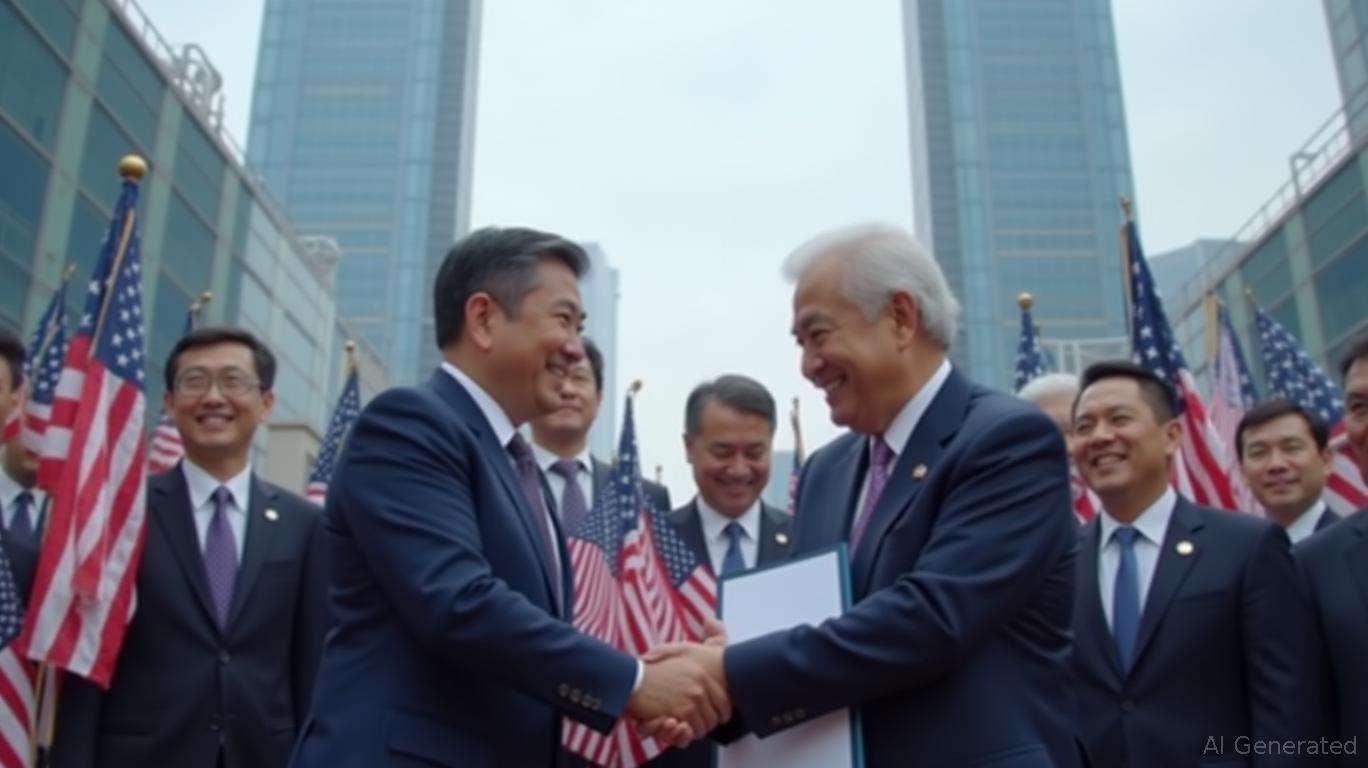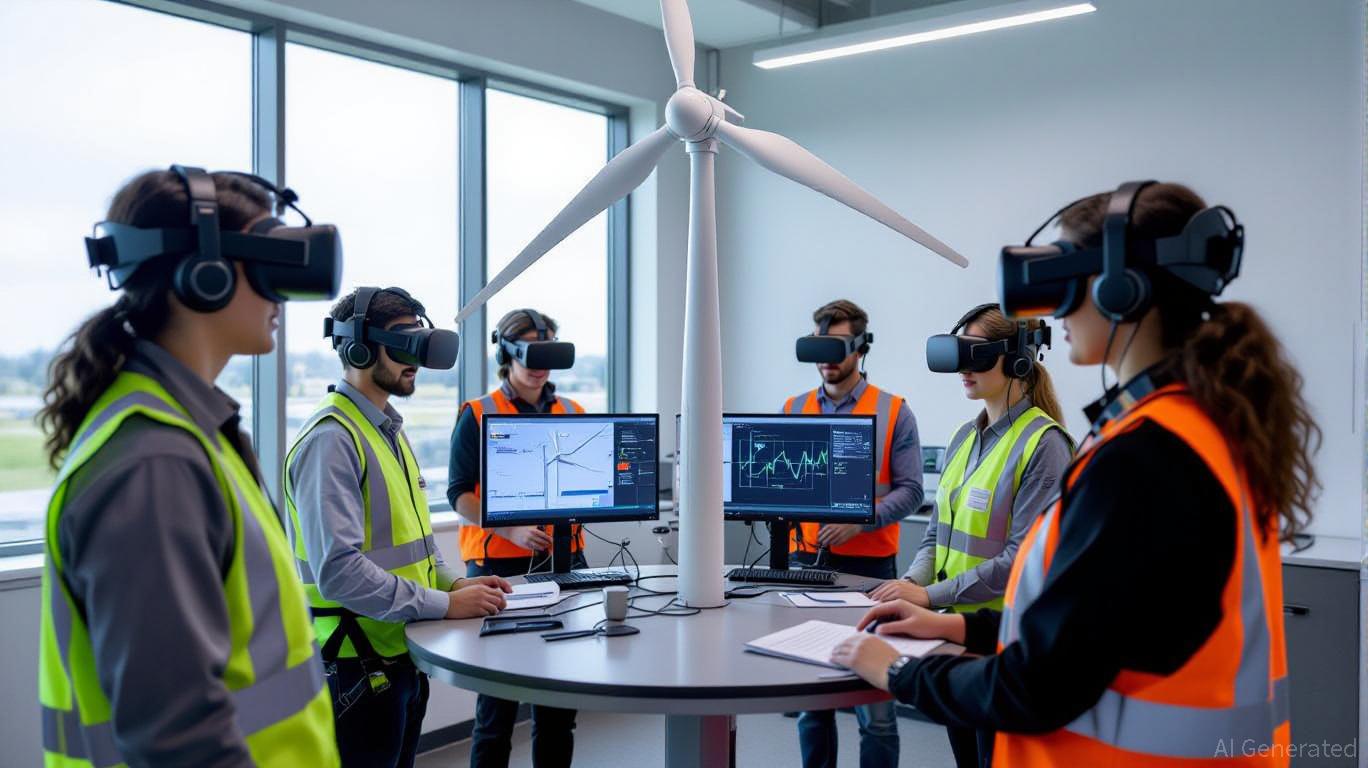Balancing Duties and Heritage: U.S.-South Korea Agreement Reinforces Partnership as Trade Dynamics Evolve
- South Korea and Trump secured a trade deal cutting auto tariffs to 15% and a $350B investment pact during APEC, resolving a dispute threatening Seoul's export-driven economy. - The agreement includes $200B annual cash infusions and $150B U.S. shipbuilding cooperation, addressing Seoul's foreign exchange concerns while linking U.S. energy/defense sector commitments. - Symbolic gifts like the Silla crown and Mugunghwa medal highlighted historical diplomacy, with Lee framing the deal as strengthening U.S.-S
South Korea’s diplomatic gestures toward President Donald Trump—including presenting a gold-plated replica of a Silla Dynasty crown and bestowing the country’s highest national honor—helped spark a breakthrough in previously stalled trade talks. During Trump’s official visit to Gyeongju for the APEC summit, both countries agreed to reduce auto tariffs from 25% to 15% and finalized a $350 billion investment deal, settling a dispute that had threatened South Korea’s export-reliant economy, according to a
The investment plan includes $200 billion in annual cash investments, limited to $20 billion per year, and $150 billion dedicated to collaboration in U.S. shipbuilding, addressing Seoul’s earlier worries about draining its foreign currency reserves, according to

The symbolic acts during the negotiations—such as awarding the Grand Order of Mugunghwa and gifting the Cheonmachong crown—highlighted South Korea’s strategy of blending historical diplomacy with economic interests. Lee gave Trump the crown, a reproduction of a 9th-century Silla relic representing “peace and leadership,” during a museum tour in Gyeongju, presenting it as a gesture toward shared goals for regional peace, as a
This pact also relieves some of the competitive pressure South Korea faces from Japan and Europe, which had already secured lower U.S. tariffs. By matching the 15% auto tariff, South Korea gains time to update its automotive sector while keeping its status as the third-largest Asian trading partner of the U.S., a
Nonetheless, some critics argue that the deal’s reliance on non-cash elements—like shipbuilding—may limit immediate economic benefits. Shin Se-don, an economics professor at Sookmyung University, questioned whether the investment plan would be enough to counterbalance the higher tariffs on steel and aluminum, which remain at 50%, as Firstpost reported. Despite these concerns, both governments expressed satisfaction: Trump called the deal a victory for “American workers,” while Lee highlighted its importance in solidifying the U.S.-South Korea partnership amid shifting regional dynamics, according to the South China Morning Post.
Disclaimer: The content of this article solely reflects the author's opinion and does not represent the platform in any capacity. This article is not intended to serve as a reference for making investment decisions.
You may also like
PENGU Price Forecast: Managing Immediate Market Fluctuations and Exploring Future AI Opportunities
- PENGU token's price fell to $0.01114 in Nov 2025, far below its 2024 peak of $0.068, amid regulatory and macroeconomic risks. - Short-term volatility is amplified by SEC ETF delays, $7.68M short positions, and susceptibility to broader crypto market downturns. - Long-term potential emerges through AI-driven features like dynamic staking and cross-chain interoperability, plus Schleich's physical collectible partnerships. - Pudgy Penguins' hybrid digital-physical model, including Walmart retail presence, d

The Rise of Dynamic Clean Energy Markets
- CleanTrade, CFTC-approved as a Swap Execution Facility (SEF), transformed clean energy markets into institutional-grade assets by standardizing VPPAs, PPAs, and RECs. - The platform addressed fragmented pricing and opaque risks, enabling $16B in transactions within two months and bridging renewable assets with institutional capital. - Institutional investors now use CleanTrade’s tools to hedge fossil fuel volatility and lock in renewable energy prices, mirroring traditional energy strategies. - Global cl

COAI Token Fraud: Insights for Cryptocurrency Investors During Times of Regulatory Ambiguity
- COAI token's 88% collapse in late 2025 exposed systemic risks in AI-driven DeFi ecosystems, with $116.8M investor losses. - Governance flaws included 87.9% token concentration in ten wallets, untested AI stablecoins, and lack of open-source audits. - Panic selling accelerated by AI-generated misinformation and CEO resignation, amid conflicting global crypto regulations. - Lessons emphasize scrutinizing token distribution, demanding transparent audits, and avoiding jurisdictions with regulatory ambiguity.

Renewable Energy Training as a Key Investment to Meet Future Workforce Needs
- Farmingdale State College's Wind Turbine Technology program aligns with surging demand for skilled labor in decarbonizing economies, driven by U.S. renewable energy targets. - Industry partnerships with Orsted, GE Renewable Energy, and $500K in offshore wind funding validate the program's role in addressing workforce shortages in expanding wind sectors. - Hands-on training with GWO certifications and VR simulations prepares graduates for high-demand, high-salary roles ($56K-$67K annually), reducing corpo
